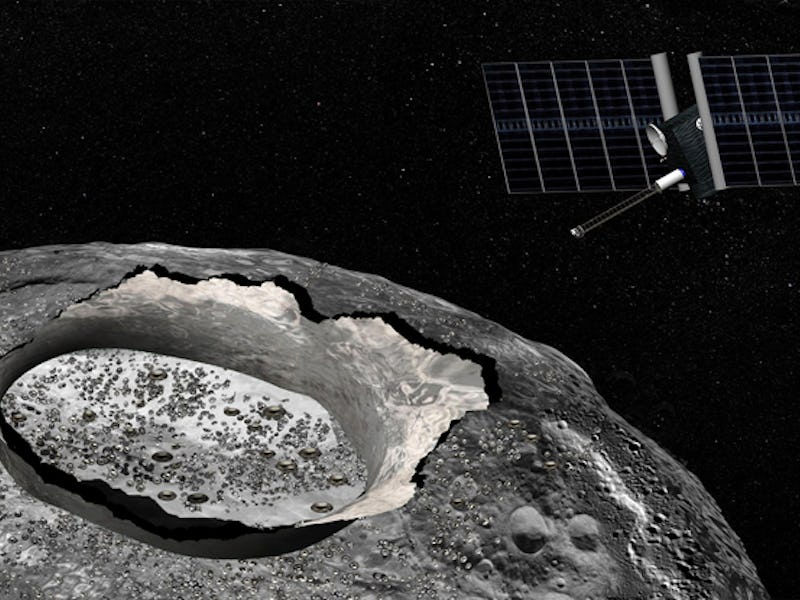Asteroid 16 Psyche is one weird, metallic space rock. Larger than Vesta, but smaller than Ceres, the 186-mile-wide metal asteroid — the largest in the solar system — is quickly making a name for itself. New research presented at the 48th annual Division of Planetary Sciences meeting earlier this month indicates the asteroid may have water on its surface.
The hunk of rock and metal is almost pure nickel-iron, and as such, planetary scientists believe it could be the shattered core of a failed planet, the outer layers of which were stripped away during the heavy bombardment period. Billions of years ago, in the early days of the solar system, our cosmic neighborhood was a chaotic place — essentially a cosmic crash-o-rama where planetary bodies were in a constant state of mosh.
Infrared observations of Psyche indicate that these impacts not only ripped away the world’s outer layers, but also delivered unexpected volatiles — such as water and hydroxyl — to the asteroid’s surface.
“We did not expect a metallic asteroid like Psyche to be covered by water and/or hydroxyl,” Vishnu Reddy, of the University of Arizona explained in a news release.
Metallic asteroids, like Psyche, are incredibly dense, and are thought to have formed under dry conditions (sans water or hydroxyl). This means that if there are wet volatiles on the surface, they are not native and were in fact delivered by some sort of impactor.
“We think the water we see on Psyche might have been delivered to its surface by carbonaceous asteroids that impacted Psyche in the distant past,” Reddy explained.
Carbonaceous asteroids, like Bennu (the target of NASA’s OSIRIS-REx mission), are rich in volatiles, clays, and other hydrated minerals, making it the perfect delivery service.
“Our discovery of carbon and water on an asteroid that isn’t supposed to have those compounds supports the notion that these building blocks of life could have been delivered to our Earth early in the history of our solar system history,” Reddy says.
One possible explanation for the presence of hydroxyl is that it could be a product of solar wind interacting with the silicate minerals on Psyche’s surface.
However, Reddy and his team detected similar impactors rich in volatiles on the surface of asteroid Vesta after analyzing images from NASA’s Dawn mission. This indicates that a dark impactor most likely struck Psyche early on in its history, which makes it an intriguing target for a proposed NASA mission.
If there is water and hydroxyl on Psyche’s surface, this could make the metal rock a prime target for future mining missions. As humans look to deep space, we are going to need fuel and supply depots and asteroids make appealing choices.
